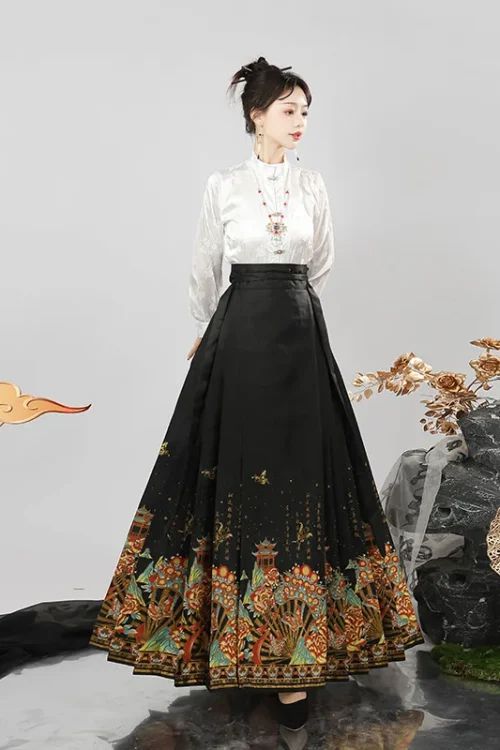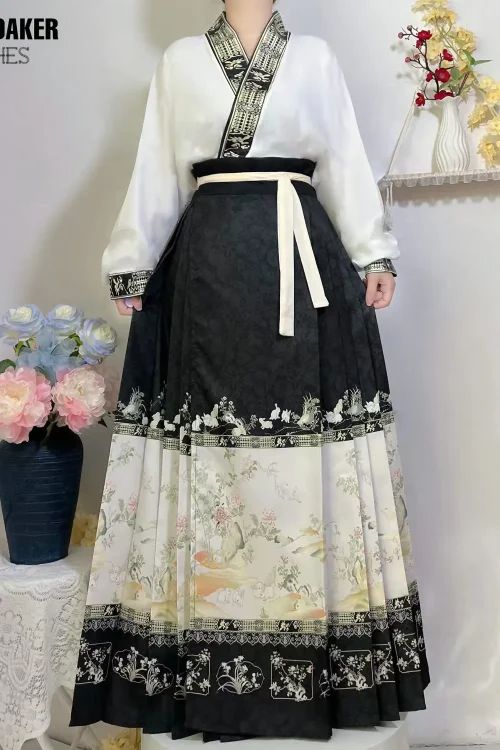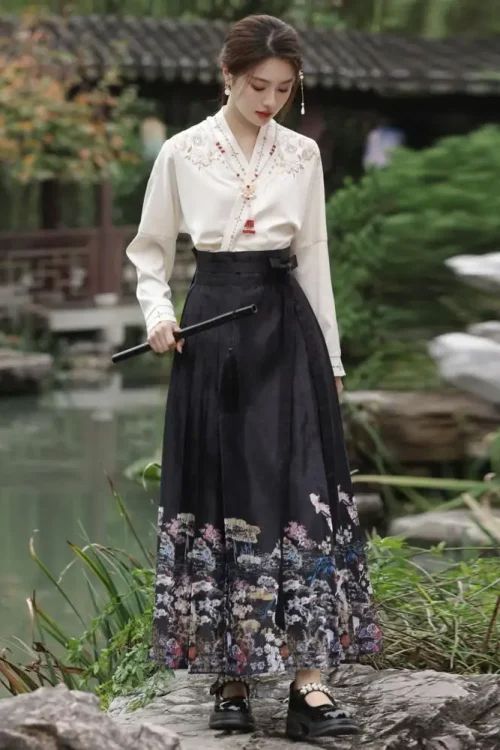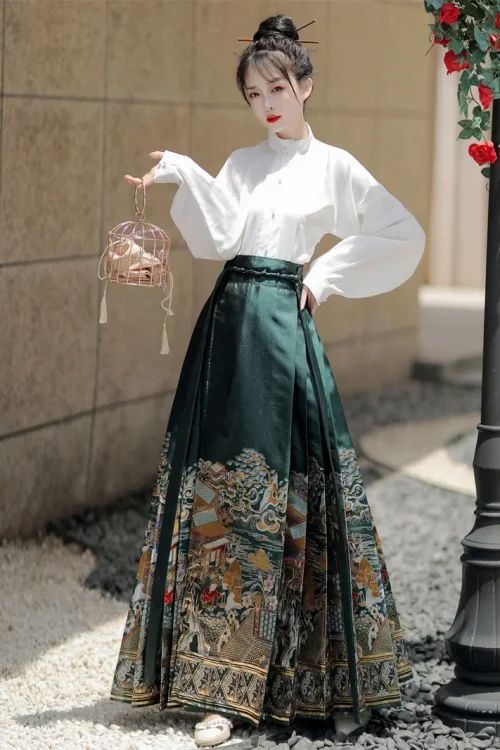Dior’s Cultural Appropriation of the Chinese Mamian Qun: A Case Study
Dior’s recent cultural appropriation of the Chinese “Mamian Qun,” or “Horse Face Skirt,” has sparked widespread controversy. This traditional garment, worn by ethnic minorities in China, has been reinterpreted by Dior as a high-fashion item, raising concerns about the commodification and exploitation of cultural heritage.

Significance of the Mamian Qun
The Mamian Qun holds significant cultural and historical value for the Miao and Dong ethnic groups. It is a symbol of identity, tradition, and craftsmanship. However, Dior’s appropriation of the garment has been criticized for its lack of respect and understanding of its cultural significance.
Modifications and Cultural Erasure
Dior’s design team has modified the Mamian Qun, altering its shape, materials, and ornamentation. This has led to accusations that the brand is trivializing and commercializing a sacred cultural artifact. Moreover, Dior’s failure to acknowledge the garment’s origins or collaborate with the communities that created it has been seen as a form of cultural erasure.
The Importance of Respecting Cultural Heritage
The controversy surrounding Dior’s appropriation highlights the importance of respecting and acknowledging cultural heritage. When fashion brands borrow from other cultures, they have a responsibility to do so in a way that is respectful and collaborative. This includes understanding the cultural significance of the garment, working with local artisans, and giving credit to the original creators.

Backlash and Calls for Apology
In the case of the Mamian Qun, Dior’s appropriation has been met with resistance from Chinese netizens and cultural activists. They have called for the brand to apologize, withdraw the garment from its collection, and engage in meaningful dialogue with the Miao and Dong communities.
Ethical Considerations in Fashion
The controversy has also sparked a broader discussion about the ethics of cultural appropriation in fashion. Critics argue that it is wrong for brands to profit from the cultural heritage of marginalized communities without giving back or acknowledging their contributions. They call for greater transparency and accountability in the fashion industry.
Dior’s Response
In response to the backlash, Dior has issued a statement expressing regret for any offense caused. However, the brand has not yet withdrawn the garment from its collection or apologized directly to the Miao and Dong communities. The controversy continues to unfold, highlighting the need for a more ethical and respectful approach to cultural appropriation in fashion.
The Ethics of Cultural Borrowing: Dior’s Horse Face Skirt Controversy
Dior’s recent release of a skirt dubbed the “Horse Face Skirt” has sparked a heated debate surrounding cultural appropriation. The design, inspired by the traditional Chinese “Mamian Qun,” has drawn accusations of insensitivity and a lack of respect for Chinese culture.

Cultural and Historical Value of the Mamian Qun
The Mamian Qun, a garment worn by women of the Manchu ethnic group, holds significant cultural and historical value. Its unique silhouette, characterized by a high waist and pleated skirt, has been passed down through generations. However, Dior’s adaptation of this design has been met with criticism for its perceived commodification and trivialization of a sacred cultural symbol.
Accusations of Cultural Theft
Critics argue that Dior’s appropriation of the Mamian Qun is a form of cultural theft, as it takes an element of a marginalized culture and repackages it for commercial gain. They contend that the company has failed to acknowledge the cultural significance of the garment and has instead reduced it to a mere fashion statement.
Offensive Terminology
Furthermore, the use of the term “Horse Face Skirt” has been deemed offensive by some, as it perpetuates a derogatory stereotype associated with Chinese women. The term, which was originally used to describe a particular facial feature, has been historically employed as a form of discrimination and mockery.

Dior’s Apology and Skepticism
Dior’s response to the controversy has been met with mixed reactions. The company has apologized for any offense caused and has stated that it intended to celebrate Chinese culture with the design. However, critics remain skeptical, arguing that the apology is insufficient and that the company has not fully addressed the underlying issues of cultural appropriation.
Ethical Considerations in Fashion Design
The Horse Face Skirt controversy highlights the complex ethical considerations surrounding cultural borrowing in fashion. While it is important to appreciate and draw inspiration from diverse cultures, it is equally crucial to do so with respect and sensitivity. Designers must be mindful of the cultural significance of garments and avoid appropriating them in a way that disrespects or trivializes their origins.
Responsibility in Cultural Borrowing
Ultimately, the responsibility lies with both designers and consumers to ensure that cultural borrowing is done ethically and respectfully. By engaging in thoughtful dialogue and educating ourselves about different cultures, we can foster a fashion industry that celebrates diversity while upholding the integrity of cultural traditions.
Fashion and Cultural Sensitivity: Lessons from Dior’s Mamian Qun Incident
Dior’s recent cultural appropriation of the Chinese “Mamian Qun,” or “Horse Face Skirt,” has sparked a heated debate about the importance of cultural sensitivity in the fashion industry. The skirt, which is a traditional garment worn by women in the Miao ethnic group, was featured in Dior’s 2022 Cruise collection without proper attribution or acknowledgment of its cultural significance.

Importance of Cultural Context in Design
This incident highlights the need for fashion designers to be mindful of the cultural context of the garments they create. Cultural appropriation occurs when elements of a minority culture are adopted by members of a dominant culture without understanding or respecting their original meaning. In the case of the Mamian Qun, Dior’s appropriation of the garment was seen as disrespectful and exploitative.
Harmful Consequences of Cultural Appropriation
Cultural appropriation can have harmful consequences, as it can lead to the devaluation and commodification of minority cultures. It can also perpetuate stereotypes and reinforce power imbalances. In the case of the Mamian Qun, Dior’s appropriation of the garment was seen as a form of cultural theft, as it stripped the garment of its cultural significance and reduced it to a mere fashion accessory.
Ethical Practices in Fashion Design
To avoid cultural appropriation, fashion designers must engage in respectful and collaborative practices. This includes working with members of the culture from which they are borrowing, understanding the cultural context of the garment, and giving proper attribution. By doing so, designers can create garments that are both fashionable and respectful of the cultures that inspire them.
A Wake-Up Call for the Fashion Industry
The Mamian Qun incident has served as a wake-up call for the fashion industry. It has highlighted the importance of cultural sensitivity and the need for designers to be mindful of the impact of their creations. By engaging in respectful and collaborative practices, designers can create garments that are both fashionable and respectful of the cultures that inspire them.
